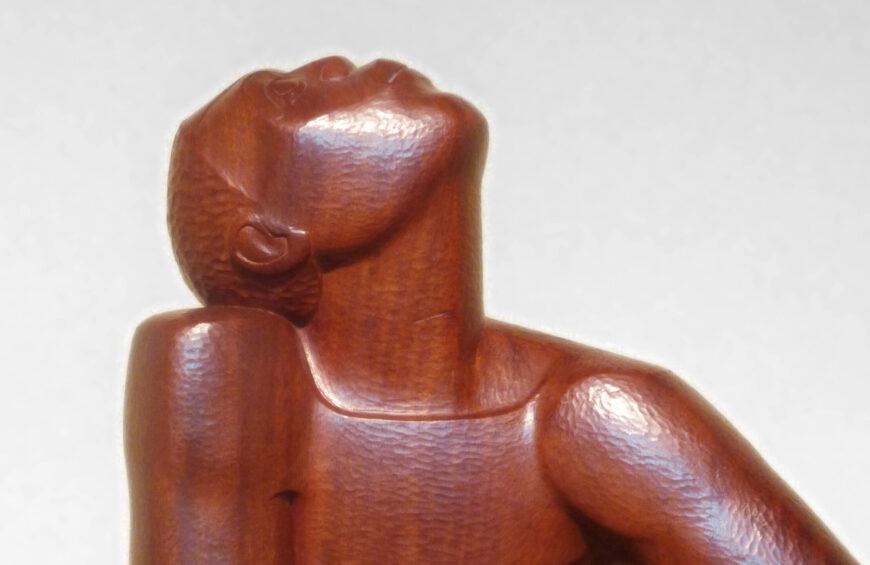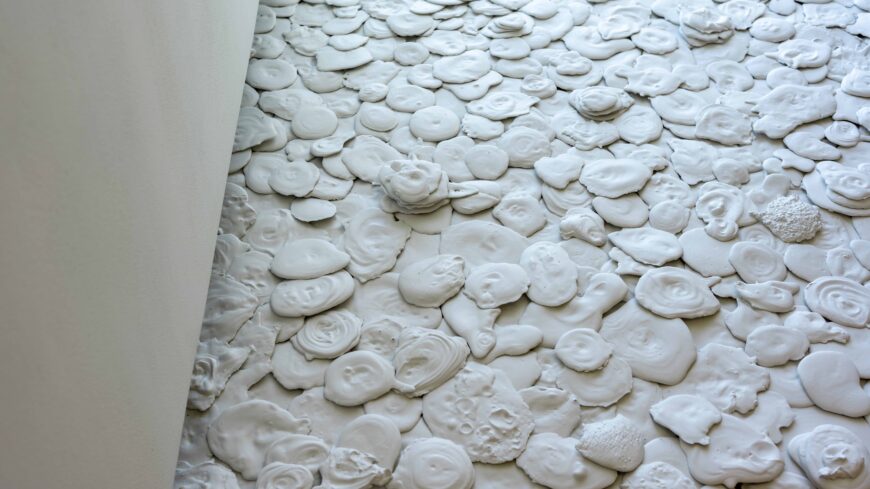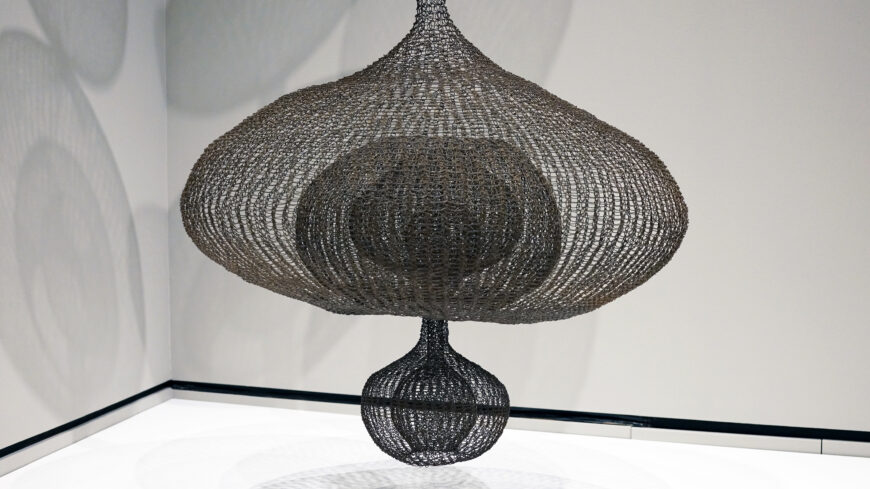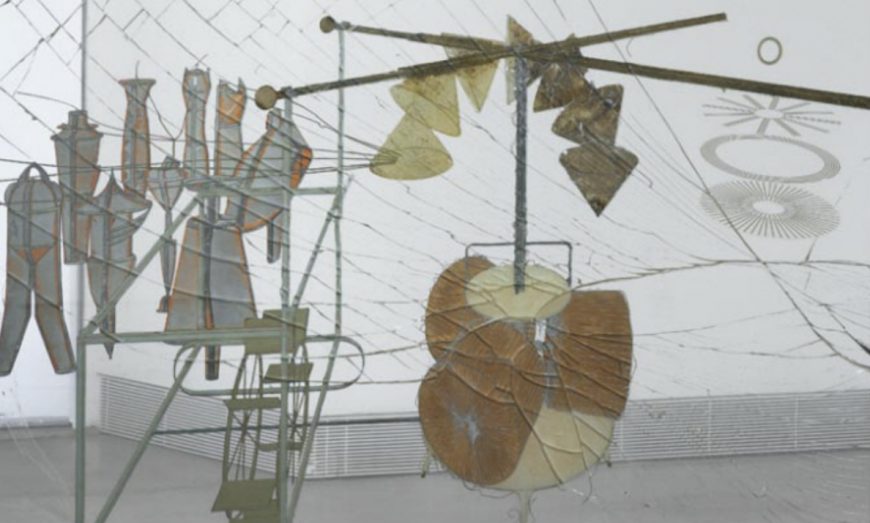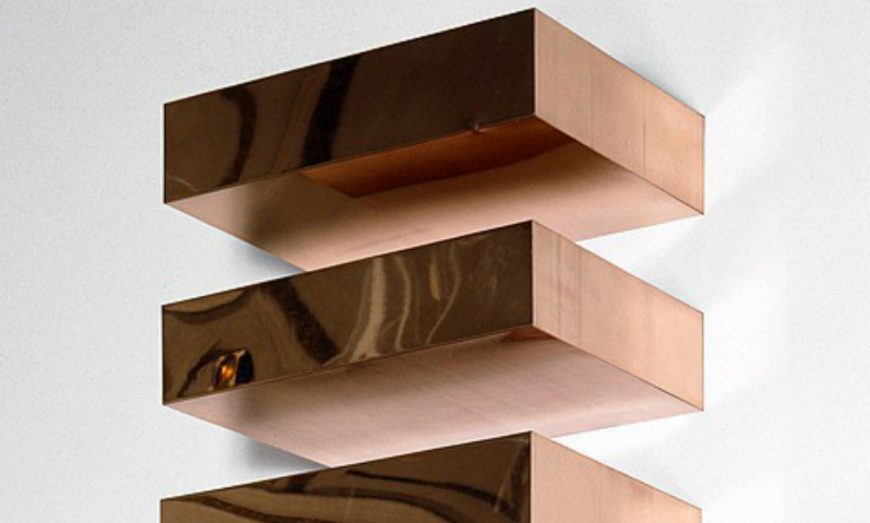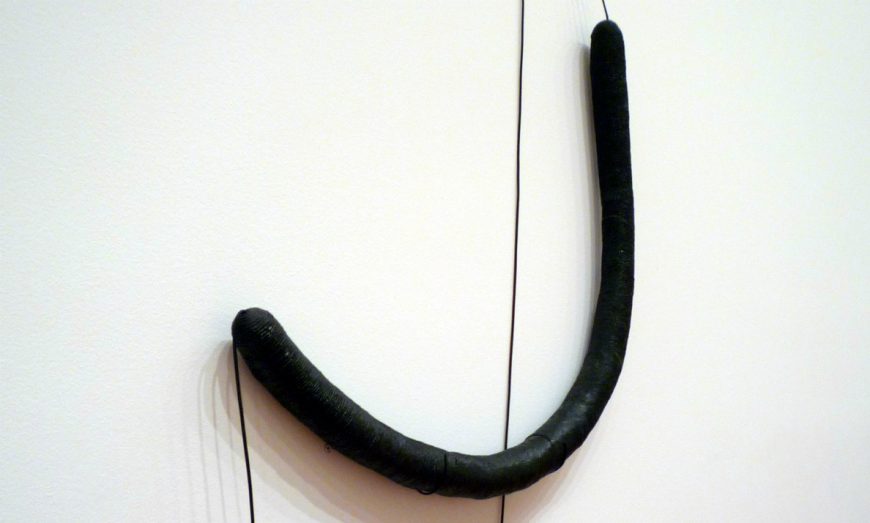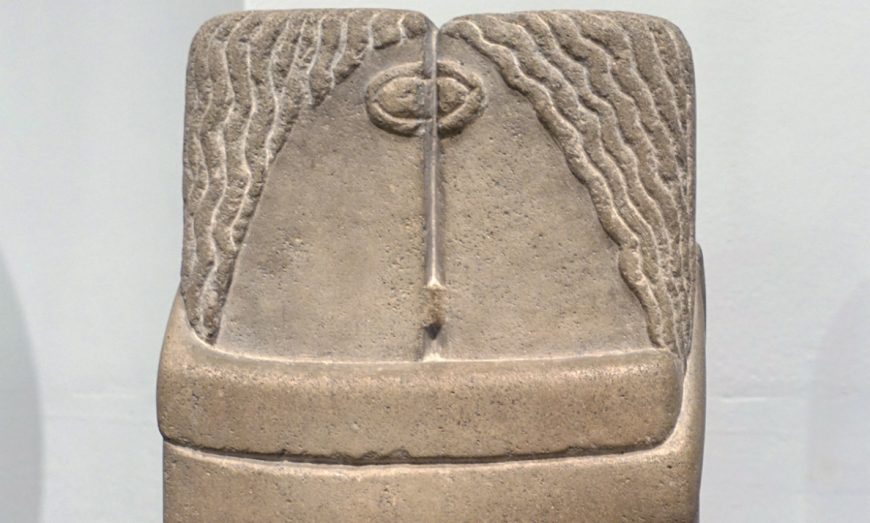Using precious stones, metals, and enamel, jewelry designer Jean Schlumberger created these extremely exuberant artifacts.
Jean Schlumberger, Columns and Sphere, 1966, gold, enamel, black lacquer, 18 carat gold, Columns: 43.5 x 11.4 cm and Sphere: 33 cm high, 11.4 cm diameter (Virginia Museum of Fine Arts, Richmond) © estate of the artist. Speakers: Dr. Sylvain Cordier, Paul Mellon Curator and Head of the Department of European Art, Virginia Museum of Fine Arts, and Dr. Beth Harris
0:00:05.2 Dr. Beth Harris: We’re in the galleries at the Virginia Museum of Fine Arts—in fact, the gallery devoted to the work of Jean Schlumberger. We’re looking at these fantastic objects, Columns and a Sphere. And those words don’t even begin to do justice to the elaborate fantastical objects that we’re seeing.
0:00:26.7 Dr. Sylvain Cordier: Sphere and Columns belong to a group of extraordinary objects that VMFA received from the Mellons. Jean Schlumberger started his career as a designer in the 1930s, creating wearable jewelries or functional fancy objects like cigarette cases or pill boxes.
0:00:44.8 Dr. Beth Harris: So these pieces were part of what Mrs. Mellon and Schlumberger called “operation object.”
0:00:52.0 Dr. Sylvain Cordier: Schlumberger and Mrs. Mellon meet in 1955. At the time, Schlumberger is a very well renowned jewelry designer for New York café society, and as early as 1959, he probably expressed to Mrs. Mellon his desire to go beyond the creation of jewelry. And she responded to that and gave him the means, gave him the support, to move forward from jewelry into using the very precious materials of platinum, gold, paillonné enamels, jewels, gems, and creating extremely exuberant artifacts.
0:01:29.3 Dr. Beth Harris: As we look at these, I feel a little bit as though I’ve walked into the treasury of a church and I’m looking at some medieval or renaissance or baroque reliquaries made out of gold, holding sacred objects, expressing through their dynamism the spiritual power of the object that they hold. And these remind me of those, but seen through the lens of a 20th-century artist.
0:01:54.9 Dr. Sylvain Cordier: If we look at it from a traditional perspective of Christian artistry, something that I think is interesting to relate these objects to are monstrances and altar objects that put those shapes of the orb of the explosion of the halo around sacredness in different ways. Schlumberger was responsive to the influence of late surrealism in the domain of applied arts and luxury arts. He developed a friendly relationship with Salvador Dalí, in particular, when we look at the Sphere and the Columns. And in 1948, 1949, Dalí comes and visits his studio. And then we know that in 1951, and probably 1952 as well, Schlumberger and his partner, Luc Bouchage visit Salvador and Gala Dalí at Port Lligat in Spain, and they stayed with them for an extended period of time. Apparently a very interesting, very inspiring stay for Schlumberger, very friendly moment with Salvador Dalí. At the time, Dalí was painting an extraordinary picture, which he titled the Lapis Lazuline Corpuscular Assumption.
0:03:04.8 Dr. Sylvain Cordier: And it’s at a moment when Dalí is developing his nuclear mysticism movement. His conception that art, religion, spirituality, has to address the new age after the atomic bomb being dropped over Japan in 1945. So Schlumberger in 1952, witnesses the making of this extraordinary very large painting, which represents the Virgin Mary and Christ kind of exploding, standing on a sphere that is itself contained within another sphere that symbolized by the cupola of the Pantheon in Rome. So there’s this idea of the explosion of the sphere happening in a visual context, very much defined by the glorification of color blue. At first glance, you imagine that you have these extraordinary objects made of lapis. In fact, they’re made of what we call paillonné enamel, an extremely complex technique that Schlumberger very much revived. You have to achieve the right temperature for firing the enamel, firing it so that the color is beautiful, but firing it also so that the enamel sticks to the metal.
0:04:15.0 Dr. Sylvain Cordier: It’s a really complex, extremely long, procedure, and it was extremely costly. And something that I particularly like with Sphere and Columns is the fact that we can track it down to the influence of Salvador Dalí, and in particular, probably the reflections and the talks and conversations that happened in 1952 between Dalí and Schlumberger, around the idea of color blue, around the idea of the exploding sphere associated with a new form of spirituality that the second half of the 20th century should bring to our practice. But these objects were made in 1965, so a long time after, and I cannot but think about the lengthy process. What it took, of course, was the maturing of the idea. It also took the meeting with the right patron, who would be willing, able, to sponsor, to finance, the making of such glorious, expensive, over-the-top, objects like the ones we see.
[music]


